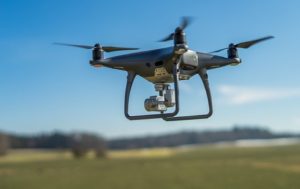
Part of an occasional series, “Things the FAA Wishes More Pilots Knew.” This article discusses 10 important rules to understand before flying your drone.
This fall, DRONELIFE had the privilege of speaking on a panel with representatives from the FAA. After some discussion, we decided to collaborate on a series of articles pointing out some of the most common mistakes and misconceptions about drone regulations. We know that the vast majority of drone pilots make an effort to follow the rules: we’re doing our part by getting the word out on some issues that may be unclear.
See our previous pieces on registering your drone, and flight over people.
Things the FAA Wishes More Pilots Knew: 10 Rules for New Drone Owners
The first and most important step, says John Meehan, Aviation Safety Analyst with the FAA, is to determine which rules govern your activity. FAA Advisory Circulars 91-57B, describing the guidance for operating drones for recreational purposes, and 107-2 can provide more information on whether or not your flight is recreational or commercial. Remember that the definition of recreational flight is very limited: you are flying for your own enjoyment. Flying for any other purpose, whether or not any cash changes hands, is generally commercial and falls under Part 107.
Here are 10 more rules for new drone flyers that the FAA wants you to be aware of:
- All flights outside are regulated by the FAA. When outside, pilots are operating in the National Airspace System (NAS) even if the flight takes place close to the ground: and all flights outside are regulated by the FAA. Private property, public lands, low altitude, etc. do not constitute exceptions to the rule.
- Most civil flights are governed by Part 107. Most drone flyers are either not flying for recreational purposes, or not flying within the safety guidelines of an existing aeromodelling organization or community based organization (CBO). (See the advisory circulars referenced above if you are unclear). Flights governed by Part 107 must follow the next rules listed:
- Drones must be registered with the FAA and marked, irrespective of weight. See our earlier article on registration. You can register your drone here at the FAA Drone Zone.
- The pilot must have a FAA issued Remote Pilot Certificate (Part 107.12). Getting a Part 107 Certificate involves passing a knowledge test at an FAA testing center. You can find more information about getting your Part 107 and educational resources to help you study here.
- Drones are limited to 400’ altitude in uncontrolled airspace.
- Drones must Operate in Daylight only (or follow the new rule for Operations at Night). The FAA has just published a new rule for Operations at Night which will shortly be effective. Use the article linked above to find the relevant documents and requirements if you wish to fly at night.
- Drones must be flown withing Visual Line of Sight (VLOS). While there are a lot of news stories about flight Beyond Visual Line of Sight (BVLOS) waivers, unless you have direct special permission from the FAA you must be able to see your drone at all times. That includes flight that is close to you, but out of sight behind buildings or other structures.
- Pilots must obtain an airspace authorization if flying in controlled airspace.
- Flight Over People and Operations at Night still require appropriate waivers. You’ll want to keep on top of new regulations – but right now, you must still obtain a waiver for these expanded operations.
- Give way to manned aircraft at all times and don’t interfere with other aircraft or emergency responders.
“Also, drone flyers need to be aware that some rules are changing a short time after the Federal Register publishes them,” says Meehan, like flight over people and operations at night. Change is a constant in the rapidly developing drone industry – subscribe to FAA social media channels and check back to the FAA website frequently to keep on top of updates. The FAA “Know B4UFly App” is also a valuable resource.
Miriam McNabb is the Editor-in-Chief of DRONELIFE and CEO of JobForDrones, a professional drone services marketplace, and a fascinated observer of the emerging drone industry and the regulatory environment for drones. Miriam has penned over 3,000 articles focused on the commercial drone space and is an international speaker and recognized figure in the industry. Miriam has a degree from the University of Chicago and over 20 years of experience in high tech sales and marketing for new technologies.
For drone industry consulting or writing, Email Miriam.
TWITTER:@spaldingbarker
Subscribe to DroneLife here.